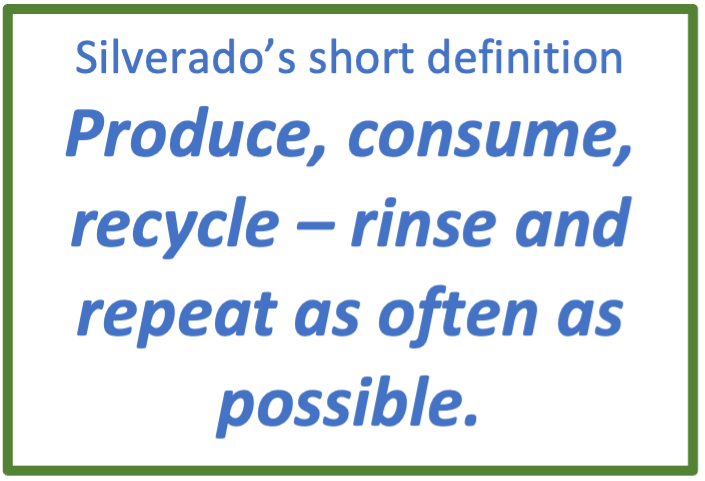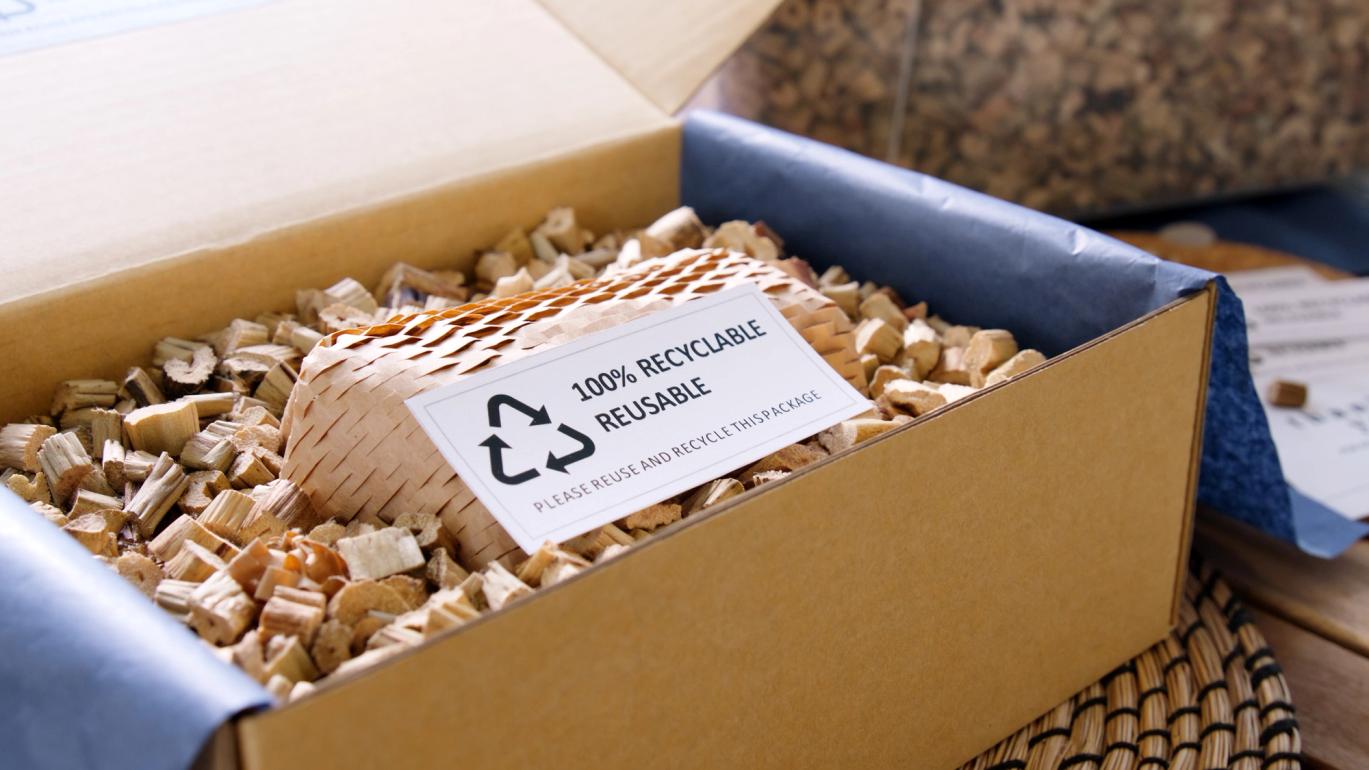Circular Economy: How is it Defined and How Should it be Defined?
Produce, consume, recycle - rinse and repeat as often as possible.

We are kicking off our exploration of the circular economy and the role of trade policy as a catalyst, but let’s first start with the basics. The circular economy moves away from the “make-use-dispose” model to proactively reintegrate used products and materials into productive commerce via a ‘reverse’ supply chain that extracts materials from society rather than mines, thereby preserving the planet from resource extraction and the excess emissions that come along for the ride. This also means there is a conscious approach to manufacturing that considers both post-use management (e.g., recyclability) and the use of recycled materials in production in the ‘forward’ supply chain, which both deliver on the circular economy goal of resource preservation while also empowering communities through localized economic growth, jobs creation, environmental justice, innovation, and social awareness of the consumption/environmental nexus.
The good news is that everyone is talking about the circular economy, and they are guided by its intuitive basics. There is a growing volume of work on the circular economy that adopts the same simple concept but approaches it with variety. The World Economic Forum and Ellen McArthur Foundation are preeminent conveners that combine the power of different stakeholders to generate action-oriented initiatives already making headway. The European Union is redesigning policies to create an “insular” circular economy based on self-sufficiency and working to convince others to take on that approach. The U.S. EPA announced a National Recycling Strategy in November 2021 as the first stage “to building a circular economy,” superseding a long-standing “Sustainable Materials Management” agenda in which recycling (i.e., the circular economy) is not necessarily the answer to post-use management.
With any policy work, we need a definition. The concept of the circular economy – as it grows in concept, reference and eventually action – seems simple, but there are several definitions (or attempts at definitions) that are true but wordy. Let’s take a look at some of the more prominent definitions:
- The World Economic Forum notes, “The circular economy, which promotes the elimination of waste and the continual safe use of natural resources, offers an alternative that can yield up to $4.5 trillion in economic benefits to 2030.”
- The Organization for Economic Cooperation and Development (OECD) says the Circular Economy “aims to transform the current linear economy into a circular model that would gradually reduce the consumption of finite material resources by recovering materials from waste streams for recycling or reuse, using products longer, and exploiting the potential of the sharing and services economy.”
- The Ellen MacArthur Foundation defines the Circular Economy as “an economy that provides multiple value-creation mechanisms which are decoupled from the consumption of finite resources” and which is based on the three principles that “eliminate waste and pollution…circulate products and materials…regenerate nature.”
- The U.S. Environmental Protection Agency (EPA) – late to acknowledging the Circular Economy concept – relies on the definition in the “Save Our Seas 2.0 Act” of 2020:“an economy that uses a systems-focused approach and involves industrial processes and economic activities that are restorative or regenerative by design; enable resources used in such processes and activities to maintain their highest value for as long as possible; and aim for the elimination of waste through the superior design of materials, products and systems (including business models).”
- The European Union is a major proponent of the circular economy but, not surprisingly, does not have a firm definition. The Circular Economy Action Plan of March 2020 aims to “help ‘close the loop’ of product lifecycles through greater recycling and re-use and bring benefits for both the environment and the economy.”

Over the course of the coming months, we will be dissecting the components of the circular economy and these different approaches to make sure we fully understand what it means but, especially, how we get there. In line with our mission, we are asking questions and developing policy ideas to transform into action under the banner of the Eco2Sec pillar – addressing economic and ecological risk and opportunity to meet the 21st century climate imperative – while also promoting trade policy as an enabler of the Circular Economy (Trade & Industrial Policy pillar). Watch this space and engage with us.
Photo Credit: iStock, Chaytee
Pillar
Energy and Resource Security
